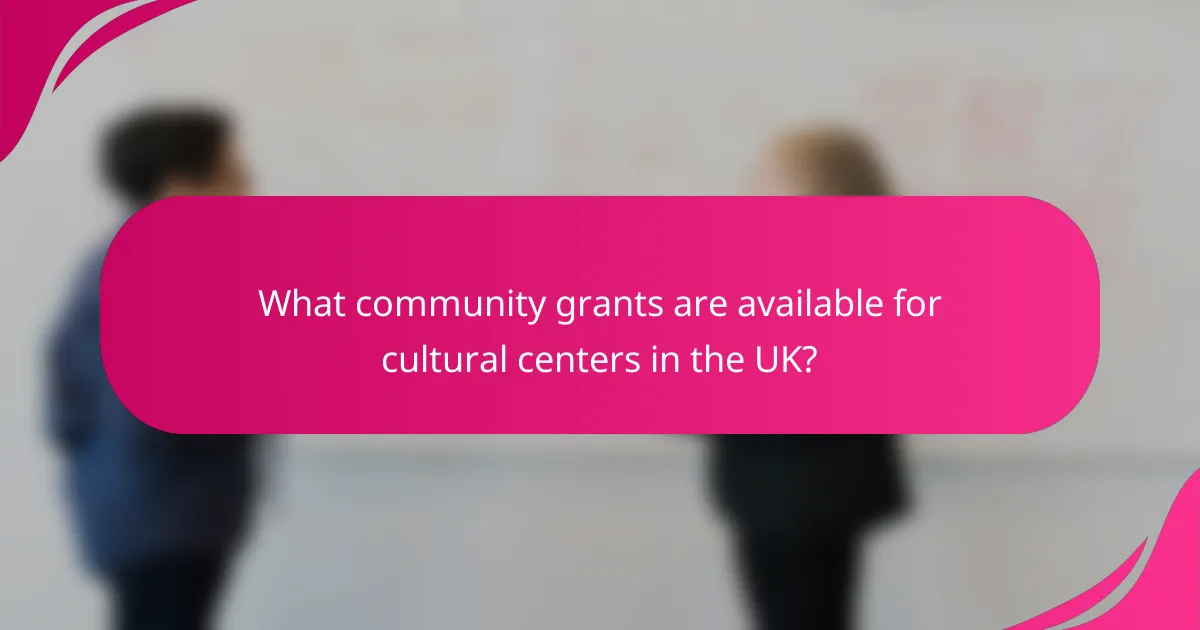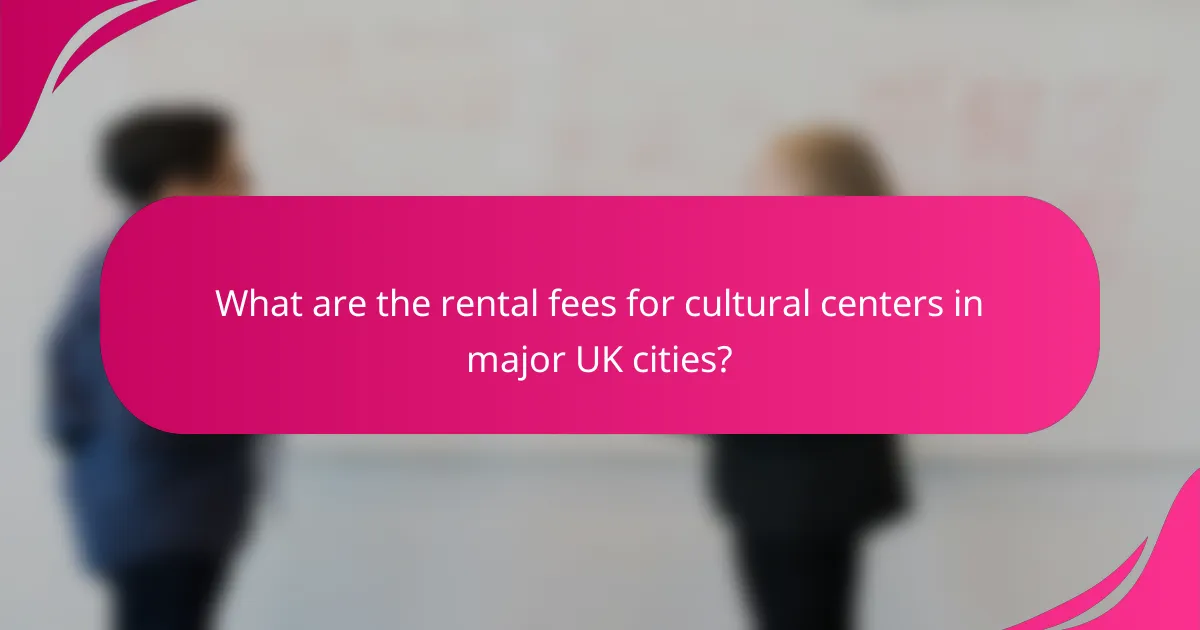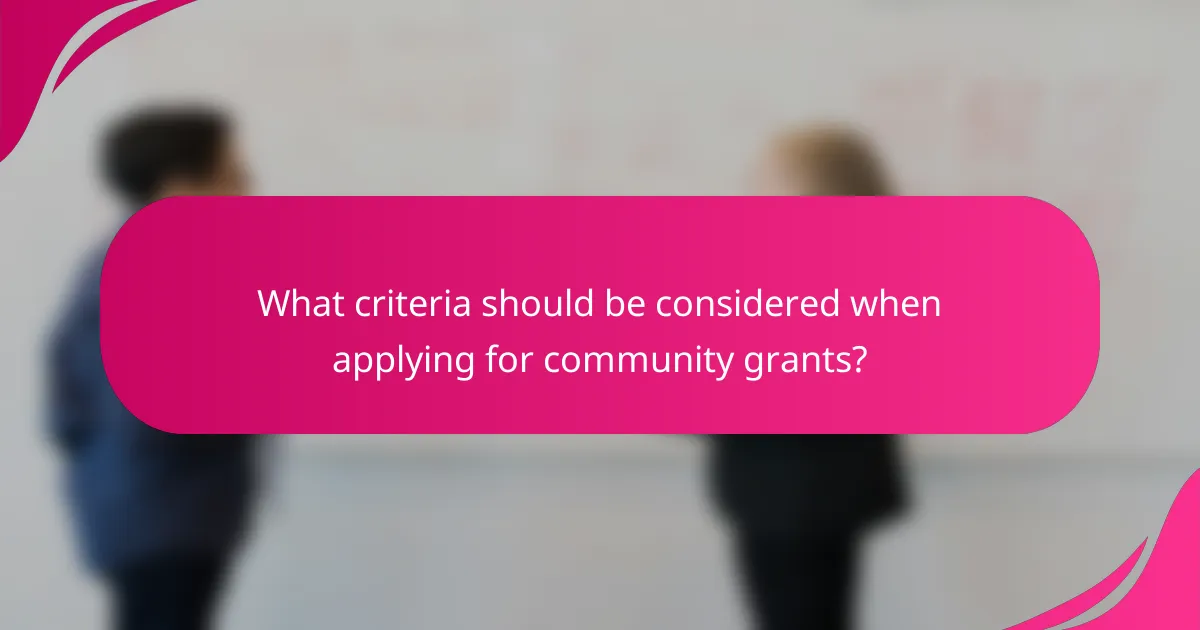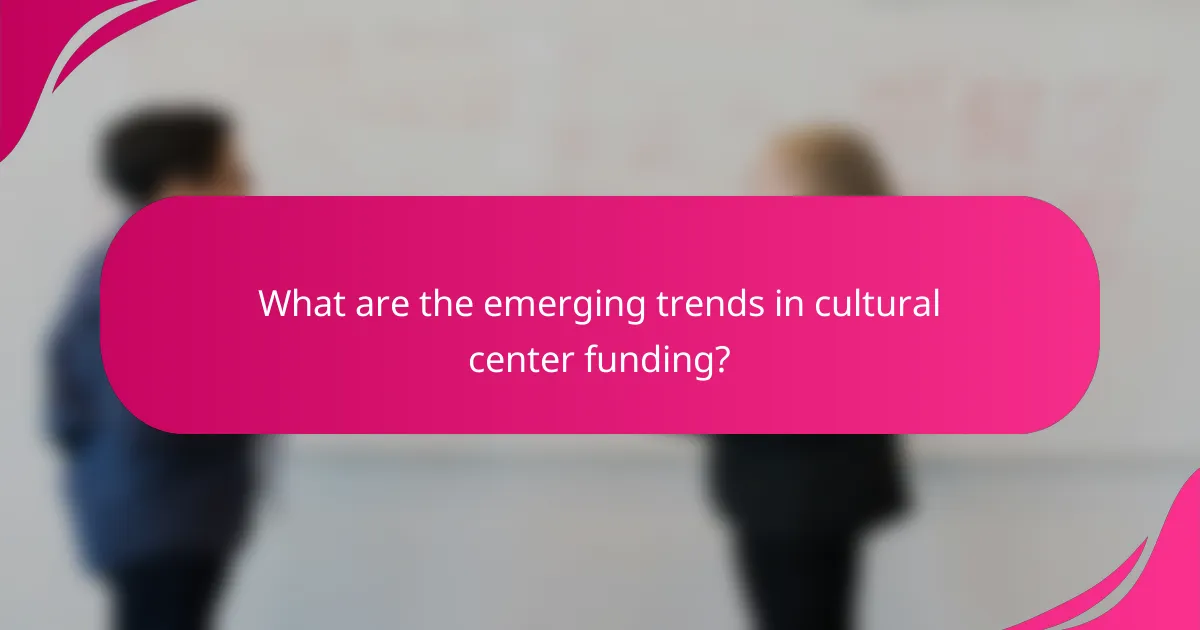Cultural centers play a vital role in their communities by providing access to various grants, sponsorship opportunities, and rental services. These centers can secure funding through community grants from government bodies and local authorities, while also forming partnerships with businesses for sponsorship. Additionally, rental fees for events can vary widely, influenced by location and facility size, making it essential for centers to understand their options to maximize resources.

What community grants are available for cultural centers in the UK?
Cultural centers in the UK can access various community grants to support their activities and initiatives. These grants often come from government bodies, charitable organizations, and local authorities, each with specific eligibility criteria and application processes.
Arts Council England Grants
The Arts Council England offers several funding programs aimed at supporting cultural centers and arts organizations. Grants can vary widely, typically ranging from a few thousand to several hundred thousand pounds, depending on the project and its scope.
To apply, organizations must demonstrate how their project aligns with the Arts Council’s priorities, such as promoting diversity and accessibility in the arts. It is crucial to prepare a detailed project plan and budget to enhance the chances of securing funding.
National Lottery Community Fund
The National Lottery Community Fund provides grants to support projects that improve communities and the lives of people within them. Cultural centers can apply for funding to develop programs that engage local residents and promote cultural activities.
Grants from this fund can range from small amounts for community projects to larger sums for more extensive initiatives. Applicants should focus on demonstrating the positive impact of their project on the community and outline clear outcomes.
Local Authority Grants
Local authorities often have their own grant schemes to support cultural initiatives within their regions. These grants can be a valuable resource for cultural centers looking to enhance community engagement or develop new programs.
Each local authority may have different funding priorities and application processes, so it is essential to check with the relevant council for specific details. Engaging with local council representatives can provide insights into available opportunities and how to tailor applications effectively.

How can cultural centers secure sponsorship opportunities?
Cultural centers can secure sponsorship opportunities by actively engaging with businesses and organizations that align with their mission. This involves creating mutually beneficial partnerships that offer visibility and community involvement for sponsors while providing essential funding and resources for the center.
Corporate Sponsorship Programs
Corporate sponsorship programs are structured agreements where businesses provide financial support in exchange for branding opportunities. These programs often include advertising space at events, logo placement on promotional materials, and recognition in press releases.
To attract corporate sponsors, cultural centers should clearly outline the benefits of sponsorship, such as increased brand visibility and community goodwill. Offering tiered sponsorship levels can also appeal to a wider range of companies, from small local businesses to large corporations.
Partnerships with Local Businesses
Establishing partnerships with local businesses can create a strong support network for cultural centers. These partnerships often involve collaborative events, cross-promotions, or in-kind donations, which can enhance community engagement.
Cultural centers should approach local businesses with tailored proposals that highlight how the partnership can benefit both parties. For instance, hosting a local business fair can provide exposure for businesses while drawing attendees to the cultural center.
Event Sponsorship Packages
Event sponsorship packages offer businesses the chance to support specific events in exchange for promotional benefits. These packages can include options like exclusive sponsorship for a festival, workshops, or exhibitions, providing sponsors with targeted visibility.
When creating event sponsorship packages, cultural centers should consider various price points and benefits to accommodate different budgets. Clear descriptions of what sponsors receive, such as booth space, speaking opportunities, or social media mentions, can make these packages more appealing.

What are the rental fees for cultural centers in major UK cities?
Rental fees for cultural centers in major UK cities vary significantly based on location, facility size, and the type of event. Generally, prices can range from a few hundred to several thousand pounds per day, depending on the amenities and services included.
London Cultural Center Rental Fees
In London, rental fees for cultural centers typically start around £500 for smaller venues and can exceed £5,000 for larger, more prestigious locations. Factors influencing these costs include the center’s location, capacity, and available equipment.
Many cultural centers in London offer tiered pricing based on the time of day and day of the week. For example, weekend rentals may be more expensive than weekday bookings. It’s advisable to book well in advance to secure the best rates.
Manchester Cultural Center Rental Fees
Manchester’s cultural centers generally have rental fees ranging from £300 to £2,500, depending on the venue’s size and facilities. Smaller community centers may offer lower rates, while larger venues with advanced technology command higher prices.
Discounts may be available for local community groups or non-profit organizations, so it’s beneficial to inquire about potential sponsorship opportunities or grants that could help offset costs.
Birmingham Cultural Center Rental Fees
In Birmingham, cultural center rental fees can vary from £250 to £3,000. The pricing often reflects the center’s amenities, such as sound systems, catering options, and seating arrangements.
Booking during off-peak times may result in lower fees, and many centers provide flexible packages that include additional services like event planning assistance. Always check for any hidden fees that may apply to your rental agreement.

What criteria should be considered when applying for community grants?
When applying for community grants, it’s essential to consider eligibility requirements, project impact assessment, and budget justification. These criteria help ensure that your proposal aligns with the grant’s objectives and demonstrates its potential benefits to the community.
Eligibility Requirements
Eligibility requirements typically include factors such as the applicant’s organizational status, geographic location, and the type of project proposed. Many grants are available only to non-profit organizations, local governments, or community groups within specific regions.
Check the grant guidelines carefully to confirm that your organization meets all specified criteria. For instance, some grants may prioritize projects that serve underserved populations or address particular community needs.
Project Impact Assessment
A project impact assessment evaluates how your proposed initiative will benefit the community. This includes defining clear objectives, anticipated outcomes, and measurable indicators of success.
Consider using qualitative and quantitative metrics to illustrate the potential impact. For example, if your project aims to improve local education, you might measure success through increased student engagement or improved test scores over a specific period.
Budget Justification
Budget justification involves detailing how requested funds will be allocated and why they are necessary for the project’s success. Break down costs into categories such as personnel, materials, and overhead to provide clarity.
It’s crucial to ensure that your budget aligns with the project scope and anticipated outcomes. Avoid overestimating costs; instead, provide realistic figures based on similar projects or market research. Additionally, consider including in-kind contributions or matching funds to strengthen your proposal.

How to choose the right sponsorship opportunities for your cultural center?
Choosing the right sponsorship opportunities for your cultural center involves aligning with your mission, understanding your target audience, and considering the potential for long-term relationships. A strategic approach ensures that partnerships enhance your center’s goals and community impact.
Alignment with Mission
When selecting sponsorships, ensure they align with your cultural center’s mission and values. This alignment fosters authenticity and strengthens your brand identity, making it easier to communicate your goals to potential sponsors.
For example, if your center focuses on promoting local art, seek sponsors who support the arts or have a vested interest in community engagement. This can include local businesses, art supply companies, or cultural organizations.
Target Audience Compatibility
Understanding your target audience is crucial when choosing sponsorship opportunities. Look for sponsors whose products or services resonate with your visitors, ensuring that their involvement enhances the experience for your community.
For instance, if your audience primarily consists of families, consider partnering with companies that offer family-oriented products or services, such as educational programs or children’s activities. This compatibility can lead to more effective marketing and engagement.
Long-term Relationship Potential
Evaluate the potential for long-term relationships with sponsors. Sustainable partnerships can provide ongoing support and resources, benefiting both parties over time. Look for sponsors who are interested in more than just a one-time event.
Consider establishing multi-year agreements or sponsorship packages that offer various levels of support. This can create a stable funding source for your cultural center while allowing sponsors to build a deeper connection with your community.

What are the emerging trends in cultural center funding?
Emerging trends in cultural center funding highlight a shift towards more inclusive, collaborative, and digitally engaged approaches. These trends reflect the evolving needs of communities and the importance of diverse funding sources to sustain cultural initiatives.
Increased Focus on Diversity and Inclusion
Cultural centers are increasingly prioritizing diversity and inclusion in their funding strategies. This trend involves actively seeking grants and sponsorships that support underrepresented groups, ensuring that programs reflect the community’s demographics.
For example, centers may apply for funding from organizations that specifically aim to promote cultural equity. Engaging diverse communities not only enhances programming but also attracts a broader range of sponsors interested in social impact.
Digital Engagement Strategies
Digital engagement is becoming a crucial aspect of funding for cultural centers. Many organizations are utilizing online platforms to reach wider audiences, which can lead to increased donations and sponsorship opportunities.
Implementing virtual events, online workshops, and social media campaigns can help centers connect with potential funders. Additionally, leveraging crowdfunding platforms allows for community-driven support, making it easier to gather small contributions from many individuals.
Collaborative Funding Models
Collaborative funding models are gaining traction among cultural centers as they seek to pool resources for larger projects. By partnering with other organizations, centers can share costs and access a wider range of funding opportunities.
For instance, a cultural center might collaborate with local schools and businesses to create joint programs, applying for grants that support community development. This approach not only maximizes financial resources but also strengthens community ties and enhances program visibility.



